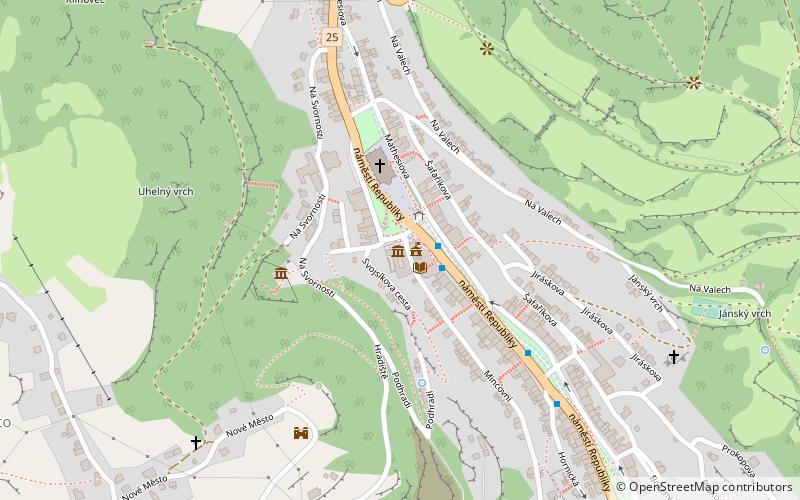Royal mint


Facts and practical information
The Royal Mint in Jáchymov is a two-storey Renaissance building with a corner bay window and a bay chapel, which stands on the corner of Mincovní Street and Republic Square.
After King Ludvík Jagellonský granted the Šlik family the right to mint in 1520, a mint was established in Jáchymov. For this purpose, the house of Kunz Eirolt was purchased, standing next to the house of Jerome Šlik, in the upper part of the town, on the site of the later royal mint. Šlik's house and the mint originally formed one complex.
The silver coin bore on the back a Bohemian lion walking to the right and the Latin name and titles of Louis Jagellonsky in the description: "LVDOVICVS PRIMVS DEI GRACIA REX BOHEMIE" and on the obverse an image of a frontally standing St. The coin was called after its place of origin - Joachimsthalergulden, Thaler - tolar. When in 1528 the new Czech king Ferdinand I took away the right to mint coins from the Šlik family, the mint of Joachim passed into royal hands. The rebuilding of the royal mint took place between 1532 and 1536 and, already completed, it was destroyed by fire in 1538, after which it had to be repaired again. The facade was originally broken by large compound windows of palace character with stone lining, which were replaced after the fire by lining of cheaper terracotta.
The corner is still dominated by a bay window with intersecting bars and the date of completion of the building 1536. It reveals the influence of the Saxon building works and the Rejt building works. The entrance portal leads to a hall with a passage to the inner arcaded courtyards, where the original mint premises were. After the decline of silver mining in the Erzgebirge, the Jáchymov mint ceased operations in 1671. The construction of the melting furnace and the massive smokestack have been preserved from the original technical equipment of the mint operations. In the historical cellar there is a lapidarium of valuable stone elements, mainly late Gothic and Renaissance, from the demolished houses of Jáchymov. Next to the mint stood the mintmaster's house, demolished at the end of the 1970s. After the end of metal coinage in Jáchymov in 1671, the building fulfilled various functions. From 1716 it housed the Mining Apprenticeship, later the Mining and Metallurgical Administration or the Jáchymov Mines Directorate. Since 1964, the Jáchymov Museum, founded in 1923, has been housed here. A comprehensive reconstruction was carried out in 1996-97, after a long period when the building was closed due to the state of disrepair.
The mint was headed by a mintmaster, appointed as a royal official, often by the original occupation of a coiner, coin cutter or mintmaster. He was responsible for the correct purity of the precious metal and the corresponding weight of the coinage, which he confirmed on the coin with his mint mark. In some periods, the functions of the two mintmasters overlapped, while in others it happened that the interim period between the departure of one mintmaster and the arrival of the other was bridged by the function of mintmaster.
Royal mint – popular in the area (distance from the attraction)
Nearby attractions include: Klínovec, Hauenštejn, Meluzína, Plešivec.










